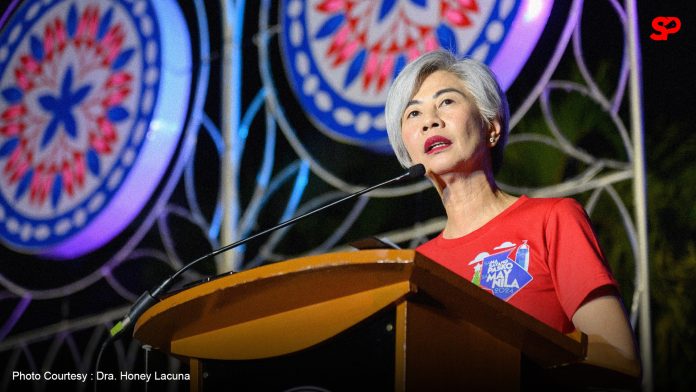The City of Manila has outlined its preparations for the Christmas season, featuring Simbang Gabi Masses and the unveiling of a record-breaking postage stamp celebrating the Philippines’ unique holiday traditions. The initiatives aim to showcase the country’s cultural and religious heritage as well as promote awareness of the historic Pasig River.
Mayor Honey Lacuna-Pangan announced on December 14 that Simbang Gabi, a Filipino Catholic tradition of nine evening or dawn Masses leading up to Christmas, will begin on December 15 with anticipated Masses, followed by dawn Masses starting December 16. While these Masses are typically held in churches, special arrangements have been made to hold Simbang Gabi at the Kartilya ng Katipunan near City Hall, in addition to major churches such as Quiapo Church and San Vicente de Paul Parish.
Simbang Gabi, also known as the “Misa de Gallo,” is one of the most deeply rooted Christmas traditions in the Philippines. It is widely attended by Filipinos as an expression of faith and a spiritual preparation for Christmas. The addition of the Kartilya ng Katipunan as a venue reflects efforts to make the celebration more accessible to the public.
In a related Christmas initiative, the city unveiled the world’s longest postage stamp, titled “Simbang Gabi sa Ilog Pasig,”on November 29. The 234mm-long stamp, designed by Gelo Andres, features depictions of nine iconic churches along the Pasig River. These include Binondo Church, Quiapo Church, Manila Cathedral, Sta. Ana Church, San Felipe Neri Church, San Pedro Macati Church, Guadalupe Church, Pasig Church, and Antipolo Church.
The stamp incorporates special design elements, including blue iridescent ink to highlight the Pasig River and multi-level embossing on the churches. Postmaster General Luis Carlos stated that the stamp aims to promote awareness of the cultural and historical significance of the Pasig River, which is undergoing rehabilitation to transform it into an Esplanade or Promenade Park.
Carlos also highlighted that the release celebrates the Philippines’ reputation for having the world’s longest Christmas season, which traditionally begins in September and lasts until the Feast of the Three Kings in January. The combination of Simbang Gabi Masses and the commemorative stamp underlines Manila’s efforts to honor both its cultural heritage and its vision for urban renewal.

